Mounting a TV above your fireplace can create a stunning, modern focal point and save valuable space. But the big question is: is it safe, and is it a good idea for your home? The short answer is yes, you can, but it requires careful planning to avoid damaging your TV and ensure a comfortable viewing experience.
You'll need to consider challenges like heat from the fireplace, achieving the correct viewing height to avoid neck strain, and ensuring a secure installation on surfaces like brick or drywall.
In this comprehensive guide, we'll walk you through everything you need to know. We'll cover the pros and cons, provide a step-by-step guide on how to mount it properly, and share crucial safety tips. We'll also explore alternative placements that might be a better fit for your space.
Is Mounting a TV Over a Fireplace a Good Idea?
Mounting a TV above your fireplace looks great and saves space. It creates a modern focal point where you can enjoy both entertainment and the cozy warmth of the fire. Just keep in mind there are some risks to think about before installing.
Pros
- Aesthetics: Mounting the TV above the fireplace creates a clean, organized focal point, bringing together two features in a stylish way.
- Space Saving: In smaller rooms or those with many doors and windows, this area is often the only practical spot for a large TV.
- Convenience: If your home has built-in niches or power outlets above the fireplace, it can be a more convenient location for your TV.
Cons
- Risk of Heat Damage: Excessive heat from wood or gas fireplaces can shorten the lifespan of your TV's electronic components and even void the warranty.
- Uncomfortable Viewing Angle: A TV mounted too high forces you to look up, leading to neck and shoulder strain, especially during long viewing sessions. This is one of the most common complaints.
- Poor Picture Quality: Most TVs, especially standard LCD/LED models, look best when viewed at eye level. Viewing from a lower angle can result in washed-out colors and poor contrast.
- Complex Mounting & Installation: Mounting on fireplace surfaces like brick, stone, or tile is more complex than on standard drywall. It requires specific tools, hardware (like masonry anchors), and care to avoid damaging the chimney structure.
- Cable Management Issues: Hiding HDMI, power, and other cables can be challenging, often requiring in-wall solutions to maintain a clean look.
Things to Consider When Mounting a TV Above a Fireplace
Before you begin installing a TV above a fireplace, there are several important factors to consider:
Fireplace Type & Location
The type of your fireplace is a critical factor. Always consider installation hazards, such as avoiding gas pipes or exhaust vents.
- Wood-Burning Fireplaces: These produce the most intense and unpredictable heat, making them the riskiest option for a TV. A sturdy mantelpiece is essential to help deflect heat.
- Gas Fireplaces: Safer than wood, but they still generate significant heat. It's crucial to check the manufacturer's specifications for clearance requirements. Learn more about the differences between electric and gas fireplaces to understand their heat output variations.
- Electric Fireplaces: Generally, the safest choice as many models don't produce real heat or vent it away from the TV area. However, always check where the heat vent is located.
- Outdoor Fireplaces: For an outdoor setup, you must use a weatherproof TV designed to withstand moisture, temperature changes, and sunlight, in addition to managing the heat from the fireplace itself.
Viewing Height
Mounting a TV above a fireplace raises it above eye level, which can strain your neck during long viewing sessions.
The high placement can also reduce picture quality on most LCD/LED TVs. To improve viewing angles, consider using a tilting mount or pull-down stand.
TV Weight
Check that your wall can handle the combined weight of your TV and mount. If you're using brick, make sure it's sturdy.
For drywall, find solid studs. Choose a mount with a higher load capacity than needed, especially if using adjustable or pull-down stands, which add leverage stress.
Stud Placement
Use a reliable stud finder to locate wall studs and securely mount the TV to at least two studs. Be cautious of hidden obstacles like electrical wires, pipes, or gas lines that might not be detected by standard stud finders.
Cable Management
Plan safe and neat cable routes. Use surface-mounted cable ducts or in-wall solutions like power bridge kits. Never run standard power cords through walls.
Ensure wiring near the fireplace is heat-resistant and consult a professional to meet electrical codes.

How to Install a TV Over Your Fireplace (Step-by-Step)
If, after considering the risks, you still want to install a TV above your fireplace, be sure to take a careful and thorough approach, including comprehensive planning, careful selection of components, and a detailed installation plan. Here are some useful tips:
Planning and Preparation
Select the right mount based on your TV's size, weight, and wall type. Consider a tilting or pull-down mount if you want flexibility.
You'll need these tools:
- Drill (hammer drill for brick/stone)
- Level and study finder
- Tape measure and pencil
- Socket set and wrenches
- Safety glasses
- Shop vacuum for debris
- Masonry drill bits (for brick/stone)
Get the right hardware for your wall type:
- Lag bolts for wood studs
- Masonry anchors for brick or stone
Don't forget your wiring needs. Pick up cable covers, a power bridge kit, and longer cables if needed.
Last but crucial: Ask a friend to help. Mounting a TV is safer and easier for two people.
Installing the TV Mount
- Locate Support: Start with a stud finder to locate and mark the center of wall studs if working with drywall. For masonry surfaces, examine the wall to find solid areas away from mortar joints. Review your building plans to verify there are no flues, gas lines, or pipes behind your chosen location. Mark all potential mounting points clearly with a pencil.
- Position the Wall Plate: Hold the mount at your chosen height, keeping in mind the final TV position and comfortable viewing angle. Place your level on the wall plate to ensure it's perfectly horizontal. Once the plate is level, mark all mounting holes with your pencil.
- Drill Holes: For drywall, drill pilot holes directly into the stud centers. When working with masonry, use a hammer drill with the appropriate masonry bit. Start drilling at a slower speed, especially on harder materials. Remove all dust from the holes using a vacuum or air compressor.
- Install Anchors (for Masonry): Insert the masonry anchors (like sleeve anchors or lag shields) into the holes. Make sure they’re the right size and type to support the load.
- Attach the Wall Plate: Fasten the wall plate using lag bolts into the studs (drywall) or the appropriate bolts and screws into the masonry anchors. Check the level one final time before fully tightening. Secure all fasteners completely, but avoid over-tightening, which can damage the wall.
For concrete or brick, start with a smaller drill bit and then step up to your final size. This technique helps prevent cracking and ensures cleaner holes.
Mounting the TV
- First, attach the vertical brackets or mounting plate to the back of the TV. Follow the instructions for your specific mount and use the correct VESA holes and screws.
- With assistance, carefully lift the TV towards the wall mount. Be sure to keep it steady to avoid any damage.
- Hook the TV brackets onto the wall plate. Follow the mount’s mechanism to ensure it’s securely in place.
- Fasten any safety screws, locking tabs, or other mechanisms on the mount. This will help prevent the TV from being dislodged.
- Double-check that the TV is level. If needed, use the mount's features to make adjustments.
Cable Management
Start by routing your power and signal cables based on your planned strategy. If you're using surface raceways, measure and cut them to the right size before sticking them to your wall. You can paint these raceways to match your wall color.
For in-wall installations, mount recessed outlets behind your TV and power inlets near existing outlets. Follow the kit instructions and only use code-compliant, in-wall rated wiring for safety.
Once the routing is set up, connect all cables to your TV and source components. Use cable ties or sleeves to bundle loose wires neatly behind the TV or inside the raceways.

Choosing the Right TV Mount for Over-Fireplace Installation
Fixed Mount
A fixed mount is the most basic and budget-friendly option. It places the TV flat against the wall, but it doesn’t allow for any adjustments.
Tilting Mount
Tilting mounts offer a step up from fixed mounts by letting you angle the screen downward. Though the adjustment range is modest, this tilt helps reduce neck strain by bringing the display closer to eye level.
Full-Motion Mount
Full-motion mounts give you the most flexibility in screen positioning. You can pull the TV away from the wall, tilt it, and rotate it horizontally.
Drop Down Mount
A drop-down mount solves the height problem by letting you lower the TV to eye level when in use. These mounts typically include tilt and rotation features for optimal viewing angles.
Important Safety Tips When Mounting Your TV Over a Fireplace
Follow Manuals
The manufacturer's specifications should be your first reference point, as they override any general advice you might find elsewhere.
Heat Management
Use an infrared thermometer while your fireplace is running to make sure it stays within safe limits. Maintain proper spacing between your fireplace opening and TV to avoid heat damage and fire risks.
Structural Safety
Ensure the wall and mounting surface are secure and can support the weight of the TV and stand. Use high-quality anchors and fasteners to avoid structural issues.
Secure Mounting
Use a level to ensure your TV sits straight. Work with a partner when lifting and mounting the TV. Tighten all bolts firmly, but avoid stripping them. Double-check that the TV's locking mechanism is properly engaged.
Don't Overlook Cables
Never route the power cord or extension cords through wall cavities, as this can be a fire hazard. Use code-compliant solutions, such as power bridge kits, and ensure all wiring near the fireplace is heat-resistant and meets safety clearance guidelines.
Professional Help
Mounting a TV above a fireplace involves more risks than standard TV mounting. A skilled installer can ensure your setup is safe and performs well.
Alternative TV Placements
If the space above the fireplace is not an option, consider other locations in the room. For comprehensive guidance on optimal TV placement, check out our guide on where to put TV in a living room with a fireplace.
Adjacent Walls
Placing the TV on another wall with a traditional TV stand or wall mount is often the simplest and most ergonomic solution. This setup helps prevent neck strain and creates a more comfortable viewing experience.
Corner Placements
Room corners offer another practical option for TV placement. A corner TV stand or adjustable wall mount can work well, especially in rooms with difficult layouts. These spots often provide good sightlines from multiple seating areas.
Low-Profile Media Consoles
Media cabinets keep your TV at a proper viewing height without drilling into walls. These units also offer storage space for cable boxes, gaming systems, and other electronics while maintaining a clean look.

The picture shows the Coleman Low-Profile TV Stand, which features a simple striped door design and a harmonious matching of the tan body and black base, highlighting its beauty and style.
Projector Setups
A projector system can be a smart alternative. You can create a large viewing surface without worrying about heat from the fireplace. Projectors also give you flexibility with screen placement and viewing angles.
Room Rearrangement
Moving furniture around might reveal better TV placement options. You can create a separate viewing area that works with your fireplace rather than competing with it.
A Perfect Alternative: The Fireplace TV Stand
If the challenges of mounting a TV above your fireplace seem too great, there's an elegant all-in-one solution: a Fireplace TV Stand. These units combine a stylish media console with a built-in electric fireplace, giving you the best of both worlds.
Why Choose a Fireplace TV Stand?
- Optimal Viewing Height: The TV sits at a comfortable, ergonomic eye level.
- No Complex Installation: No drilling into brick or worrying about studs and wall support. You can even put an electric fireplace in an existing TV stand for added flexibility.
- Safety First: Designed to safely house electronics away from the low-heat electric flame. Electric fireplaces are notably safe for this application.
- Ambiance and Storage: You get the cozy vibe of a fireplace plus storage for your media devices, and they don't use excessive electricity.
Our Top Recommendations from Belleze
Avenue Long TV Stand with Fireplace for TVs up to 75″
This sleek, low-profile entertainment center combines modern aesthetics with practical storage, featuring LED flames with 16 color options and 5 speed settings.
The contemporary design seamlessly integrates two storage cabinets and three open shelves, perfect for organizing gaming systems, media players, and decorative items while maintaining a clean, sophisticated look.
- 16 LED flame colors with adjustable brightness and speed settings via remote control
- Damage-resistant surface with waterproof and anti-scratch paper veneer finish
- Generous storage capacity supporting up to 80 lbs on top, 30 lbs per shelf/cabinet
- Efficient heating covers up to 400 sq ft with 5000 BTUs per hour output
- Safety features include tip-over restraint device and premium adjustable hinges
Lenore Modern Fireplace TV Stand for TVs Up to 80 Inches
Experience sophisticated entertainment with this dark gray TV stand featuring crown molding and fluted pilasters that add architectural interest.
The realistic flame effects with glowing log set create authentic ambiance, while six open shelves flanking the fireplace provide elegant display space for books, electronics, and cherished décor pieces.
- Authentic fireplace design with realistic logs and flickering flame effects
- Six open storage shelves (three on each side) for versatile organization
- Self-regulating electric heater with automatic shut-off for safety
- Remote-controlled operation for convenient heat and flame adjustments
- Energy-efficient option allowing flames without heat for year-round ambiance
68" Farmhouse TV Stand with 36" Electric Fireplace
Bring rustic elegance home with this farmhouse-inspired entertainment center featuring distinctive grooved door panels and your choice of white/black or brown/gold color combinations.
The expansive 36-inch electric fireplace creates a captivating focal point, while three drawers and two adjustable-shelf cabinets offer exceptional storage versatility for modern living.
- Two designer color options: White with black handles or brown with gold accents
- Extensive storage solutions with three drawers and two cabinets with adjustable shelves
- Large 36" electric fireplace for impressive visual impact and warmth
- Distinctive grooved door design creating sophisticated three-dimensional texture
- EPA/CARB certified materials ensuring durability and environmental responsibility
For more options, explore our curated list of the 8 best fireplace TV stands of 2025. If you're still deciding, our comprehensive buying guide for fireplace TV stands covers everything you need to know, including common mistakes to avoid.
Conclusion
While mounting a TV above your fireplace is possible, you need to carefully consider the risks from heat damage, neck strain, and complex installation requirements. Your success depends on thorough planning, following manufacturer guidelines, and using proper equipment like specialized mounts and cooling systems.
This setup will require trade-offs that could affect your viewing experience and TV lifespan. Focus on long-term safety, comfort, and picture quality when making your decision. If you can't fully address these concerns, choosing another location for your TV might be a better choice. Consider whether you need a TV stand with or without a fireplace based on your specific needs.
While design trends change, the basics of safe and comfortable TV viewing stay the same. Consider working with a professional installer to ensure the best results for your specific situation. And if you do opt for a fireplace TV stand, discover how to enhance your electric fireplace ambiance for the perfect living room atmosphere.


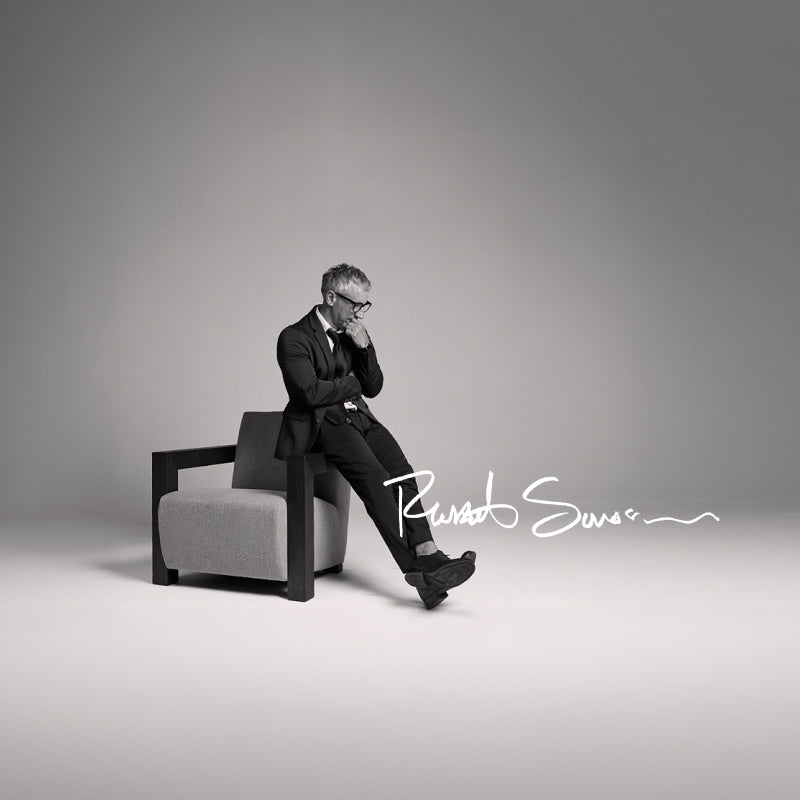
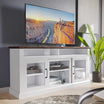
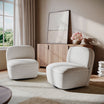
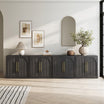
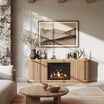


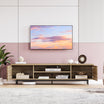
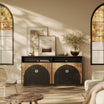
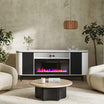
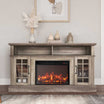
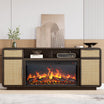
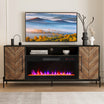
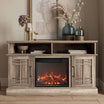
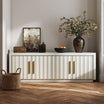
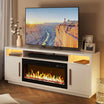
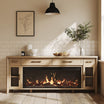
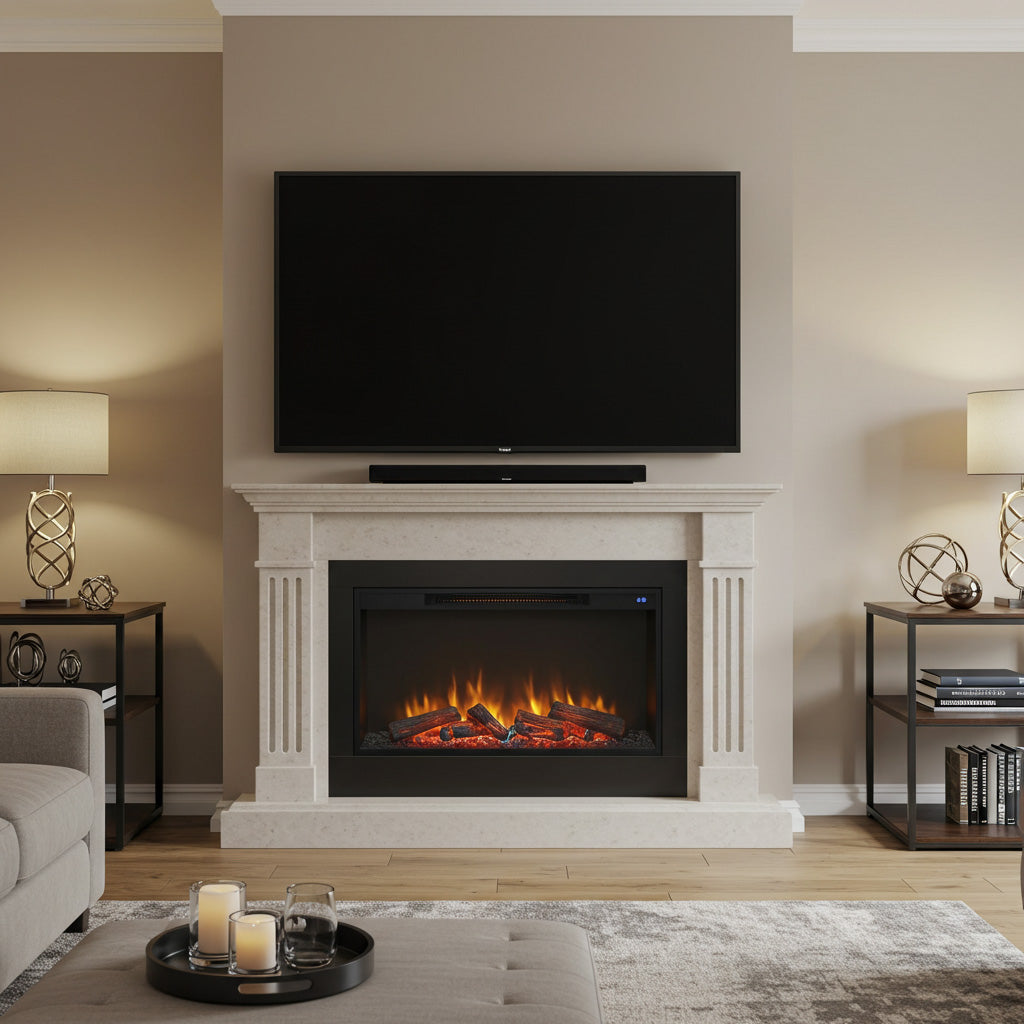
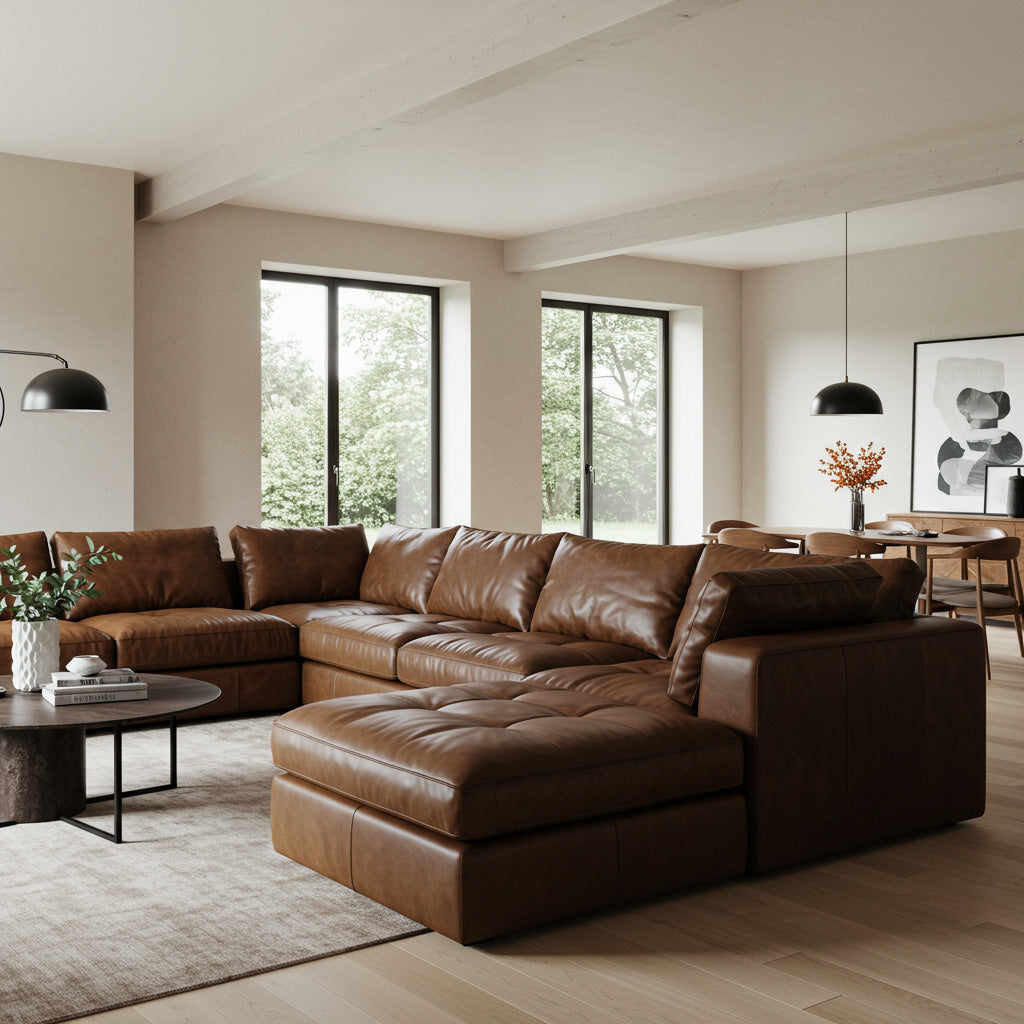
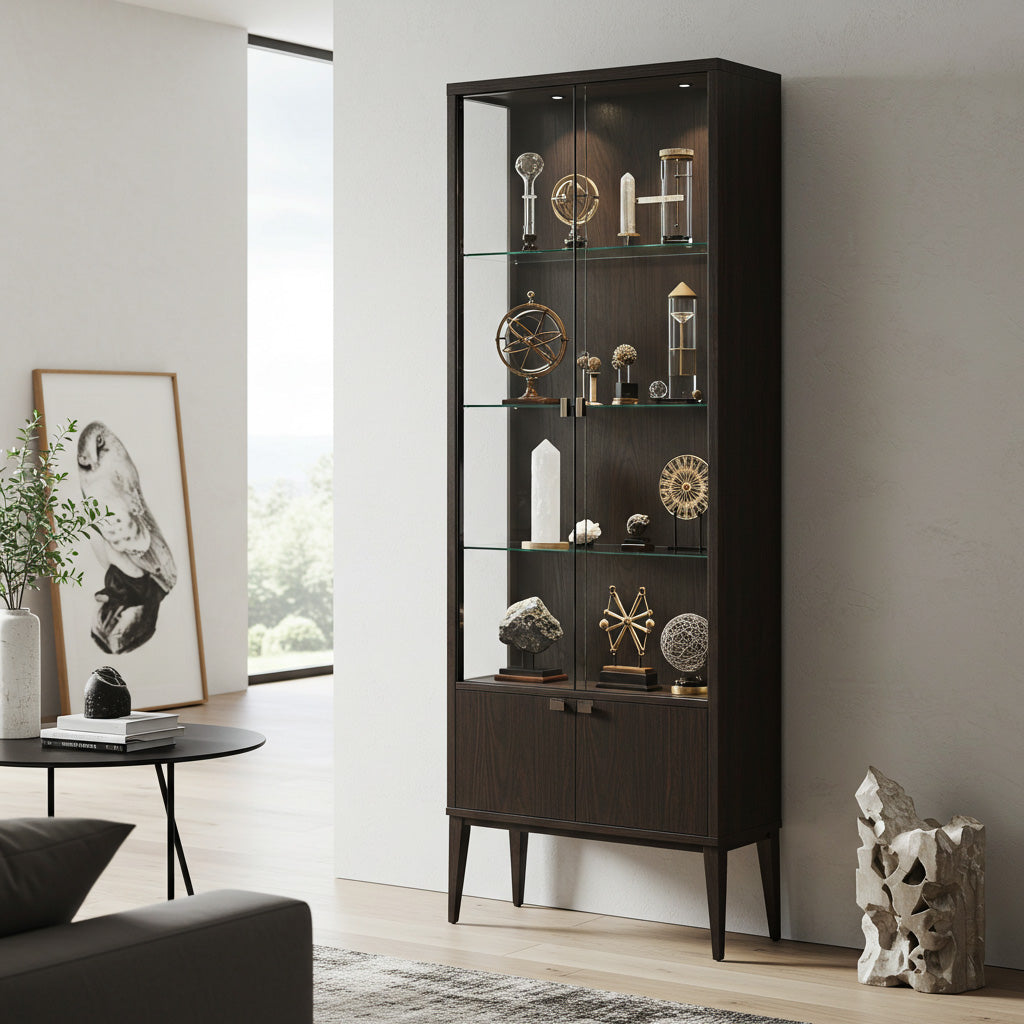
Leave a comment
This site is protected by hCaptcha and the hCaptcha Privacy Policy and Terms of Service apply.